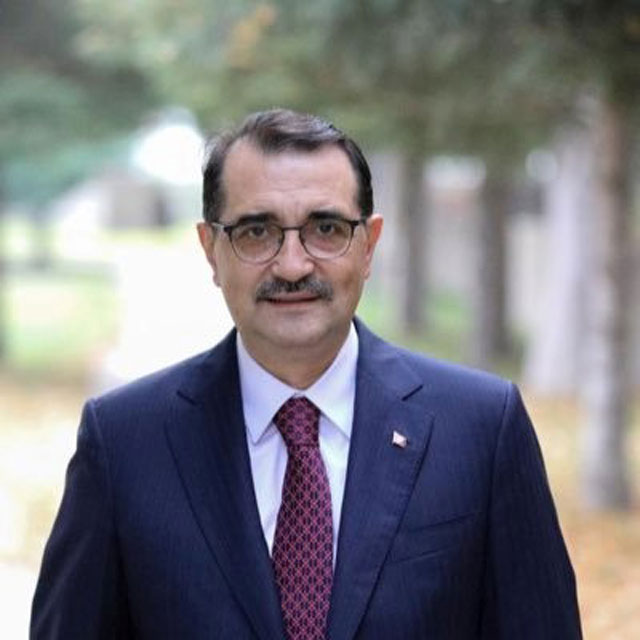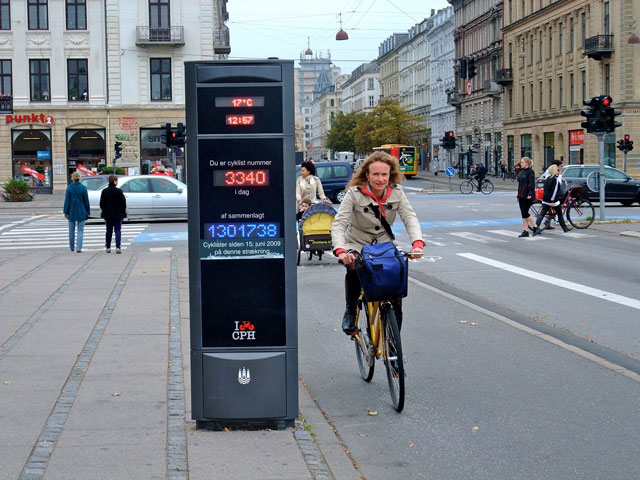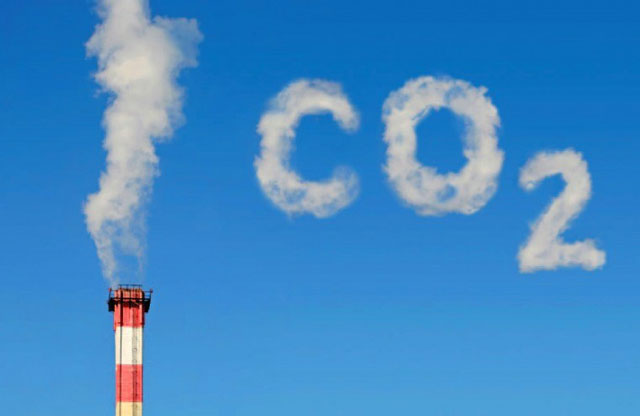
Efforts are underway to expand Turkey's energy exchange market and attract more actors from European countries, Turkey's Energy and Natural Resources Minister Fatih Donmez announced Wednesday.
The minister told Anadolu Agency's Editors' Desk that gas pipeline projects like the Trans Anatolian Natural Gas Pipeline Project (TANAP) and the TurkStream would not only ensure Turkey's gas supply security and diversity, but would also play a big role in covering those of Europe.
"Thanks to the new pipelines, Turkey has become the region's energy trade hub. Works are ongoing not only to increase the number of pipelines, but also to expand the energy exchange market," he said, adding he also expects the involvement of European players.
TANAP, which carries Azerbaijani gas to Turkey, is the longest part of the Southern Gas Corridor, which is set to connect to Europe through the Trans Adriatic Pipeline (TAP). TAP will transport 10 billion cubic meters of Azeri gas per year to southeast Europe. TAP, which is the European leg of the corridor, is currently under construction, and completion is expected by 2020.
The TurkStream pipeline, on the other hand, will carry Russian gas to Turkey and Europe, and will have a total throughput capacity of 31.5 billion cubic meters. The first line, which will serve Turkey, will have a capacity of 15.75 billion cubic meters. The second line, which will have the same capacity, will provide gas to Europe via Turkey.
Completion of the first line, comprising a 69-kilometer-long (43-mile) land section, is expected late this year, with first gas expected to flow shortly after.
Donmez also said that Turkey's current partnerships with international companies for oil and gas exploration in the Mediterranean and the Black Sea would continue, adding that the country is open to new cooperation in both seas, particularly in terms of oilfield services.
Last October, U.S.-based energy company Schlumberger announced in a financial report that Turkish Petroleum awarded a $15 million Integrated Services Management (ISM) contract to them for TP's drillship Fatih to drill the deepwater well Alanya-1 in the Eastern Mediterranean Sea.
In line with the contract, Schlumberger is providing project management services for Fatih, and coordinating multiple product lines.
Turkey started its first deep-sea drilling offshore Antalya on the Mediterranean coast on Oct. 30, 2018, with the aim of performing up to four drillings per year. Seismic explorations are also ongoing in the Black Sea.
Source: AA

As part of the 2nd Women Supplying Energy to Turkey program organised by the Ministry of Energy and Natural Resources, the awards have been distributed. During the ceremony attended by the First Lady Emine Erdoğan, as well as Berat Albayrak, Minister of Treasury and Finance; Fatih Dönmez, Minister of Energy and Natural Resources; Ruhsar Pekcan, Minister of Commerce; and Zehra Zümrüt Selçuk, Minister of Family, Labour and Social Services, Enerjisa Enerji was presented ‘Exemplary Company’ award in woman employment category.
Organised for the second time this year with the goal to raise awareness on woman employment in the energy sector, the award ceremony gathered representatives of politics, business life, art, sports and non-governmental organisations.
Active participation of women is a "must" for a sustainable growth
Being presented the "Exemplary Company" award by the Ministry of Energy and Natural Resources in the category of women employment, Enerjisa Enerji CEO Ziya Erdem stated; "I believe employment of women has a significant importance in sustainable economic growth and social development. A healthy and efficient economic growth cannot be achieved unless women are actively involved. Increasing employment numbers of women in Turkey and woman empowerment also mean empowerment of families, which will bring economic and social development. Thus, I find "Women Supplying Energy to Turkey" program which has been organised by the Ministry of Energy for two years significantly important on behalf of the energy sector. The program means a lot in terms of enabling active participation of women in the energy sector and drawing attentions to women employment. I would like to take this opportunity to thank the Ministry of Energy and Natural Resources one more time for presenting us the "Exemplary Company" award.
Enerjisa Enerji takes it very seriously to fulfil its responsibilities and considers increasing the number of women employed in our sector and supporting women at the executive level and every level of the organisation among its major priorities. Hence, we have signed Women's Empowerment Principles (WEPs). Implementing these principles in our company, we will continue strength the positions of women in the business life and encourage them. Our company supports the increase in woman employment rate at every level and I believe this increase in the number of women employed results in a positive contribution in the performance of our company. My desire is to enable the existence of women in all sectors, not only in the energy sector, and achieve gender balance".

This is according to a new study conducted by Frost & Sullivan, looking at key market developments, technologies used to convert big data to smart data, government programmes and the companies applying data analytics.
The anticipated increase in the smart data market revenue generation is a result of:
- Advancements in data processing tools
- Increased adoption of next-generation technologies such as augmented analytics to extract insights from big data
Frost & Sullivan predicts new data monetisation business models will expand growth opportunities for solution providers.
Naga Avinash, Research Analyst, TechVision, said: "Markets such as the US, the UK, India, and Dubai have rolled out several initiatives to use Artificial Intelligence (AI) and machine learning-powered data analytics tools to generate actionable insights from open data.
"Smart Data will help businesses reduce the risk of data loss and improve a range of activities such as operations, product development, predictive maintenance, customer experience, and innovation.
"The evolution of advanced data analytics tools and self-service analytics endows business users instead of just data scientists with the ability to conduct analyses.
"Technology developers can ensure much wider adoption of their solutions by offering in-built security mechanisms that can block attackers in real time. They could also develop new business models such as shared data economy and even sell data-based products or utilities."
The majority of governments deploying data analytics on open data are targeting to address smart city challenges and water crisis.
The research firm urges solution providers wanting to increase their footprint in the smart data market to:
- Employ augmented analytics and self-service data analytics tools
- Adding new data analytics services to existing offerings.
- Innovate with smart data solution provider across the world
- Collaborate with governments to address the issue of talent shortage and setting clear investment and data strategy goals.
Source: Smart Energy International

Tesla is going to focus its efforts on the Solar Roof for the coming year, CEO Elon Musk told an audience Thursday. The company’s energy-collecting tiles, which look like a standard roof to the untrained eye, have wowed onlookers with their sleek design but have so far only made their way to a handful of houses. Based on Musk’s comments, that’s all about to change.
“This is definitely going to be the year of the Solar Roof and Powerwall,” Musk said during the company’s unveiling of the Tesla Model Y entry-level compact SUV at the Tesla Design Studio in Hawthorne, California. “Because of the extreme challenges with the Model 3 production, we had to basically allocate all resources to Model 3 production because otherwise, we were going to die.”
Musk explained that these efforts will “ultimately be really critical for transitioning the world to sustainable energy.” Solar panels harness sunlight for clean energy, while batteries store the power for use at all times.
The issues from last year that Musk is referring to revolve around the Tesla Model 3, the entry-level sedan that entered production in July 2017. Tesla struggled to produce enough cars to work through a backlog of nearly 500,000 orders, as the company only produced around 2,000 premium Model S and X vehicles per week before its introduction. Tesla eventually reached a weekly Model 3 production rate of 5,000 in July 2018, resulting in 7,000 cars total, but the chaotic stretch to reach that figures led to Tesla facing a “severe threat of death.” Musk said on Thursday that 2018 “felt like probably aging five years in one.”
That left the solar roof on the back burner. Musk demonstrated the roof in November 2016 as part of an integrated home of the future, with a battery storing energy and a Model 3 charging in the garage. Tesla installed a smattering of roofs for California residents like Amanda Tobler and Tri Huynh in early 2018, but the Model 3 left other projects without enough power cells to fulfill orders.
“Solar plus battery plus electric vehicles, we have a fully sustainable future,” Musk said. “That’s a future you can feel really excited and optimistic about. I think that really matters.”
Musk said on Thursday that the team can “finally allocate engineering attention” to solar projects. This echoes his statements in the third-quarter earnings call, where he said “we also start getting into volume production of the Solar Roof next year.”
Early impressions paint a warm picture of the roof. Tobler’s 2,000-square-foot roof cost around $50,000 once the federal solar investment tax credit is factored in, at a rate of $42 per square foot of solar tiles, $11 per square foot of dummy tiles, and a mix of 40 percent solar to non-solar tiles. This produces 9.85 kilowatts of power. Tobler told Inverse that “I wouldn’t hesitate to do it again.”
Musk also stated that the company will continue its efforts with the business-focused Powerpack. The company has delivered over 1.5 gigawatt-hours of energy in over 30 countries. It completed the world’s largest lithium-ion battery in South Australia in 2017 at 100 megawatts, and now plans to build a gigawatt-hour system in Southern California.
While last year may have looked dark for Tesla, the sun may be about to start shining on more solar roofs than ever.
Source: Inverse

Smart cities continue to receive global attention. Alphabet (nee Google) is engaged in Toronto through its Sidewalk Labs company in creating a smart neighborhood on the formerly industrial waterfront. Microsoft is engaged through its CityNext initiative in bringing AI and IoT to urban issues. MIT continues to pay attention to the area, as do numerous Internet of Things (IoT) startups.
But all of the hardware and AI tend to occlude the heart and soul of smart cities, the intelligent and committed teams engaged in long running processes of data-gathering, analysis, and policy to improve the urban fabric. Most of us live in cities, and that trend is increasing. A smart city is shaped by its urban planners and civic organizations to make those cities healthier and more convenient for us, and more efficient for everyone, including business.
It’s worth going back to a basic definition and looking at some extensions. Wikipedia’s starting point is pretty good: A smart city is an urban area that uses different types of electronic data collection sensors to supply information which is used to manage assets and resources efficiently.
One of the things that is good about this definition is that it’s not about visible gizmos and it doesn’t presuppose IoT solutions or CCTV. It’s about using the capabilities of the various sensors available to us to gather information, and then using other techniques to make cities better.
This has been going on for years, and we’re just getting better at it. It was common to see people standing on street corners with clipboards and the like counting passing vehicles a couple of decades ago.
Now, there are simple sensors run across roads, and increasingly bike paths, that send information on each passing vehicle to a computer.
Both examples used existing technology, but one is a lot more expensive than the other and a lot more error prone. And both have the same purpose: gathering data to support the existence or change of traffic infrastructure in the context of how it’s used and how uses are changing. This data allows better decision making and allows in many cases more controversial changes to be supported, typically in the case of cycling infrastructure.
For the most part, we ignore this data gathering process. It’s just invisible street furniture. And we see none of the analysis of the data happening in the background. And we see none of the position papers and policies and decisions arising from analysis of the data. But we do see better traffic flow.
A tremendous amount of urban infrastructure was built based on first principles of what a designer thought made sense with limited empirical evidence, based on historical examples or was just poorly thought out. Evidence-based decision making is resulting in a myriad of changes, many of which we don’t think of as smart city components.
A major example of this is the realization that road lanes were too wide and that there were two few solid objects close to the road. The North American highway designers of the early part of the 20th Century were working from first principles when they decided that 13-foot (4-meter) wide lanes and clearing shoulders of roads of all solid objects that might be struck would increase the safety of roads. They were wrong. Wider lanes and no roadside obstructions led to significantly increased speeds, even between lights with drivers accelerating hard and then decelerating hard. Higher speeds meant more frequent collisions of greater severity, both with other vehicles and with other road users such as cyclists and pedestrians.
But it took a lot of data to figure out that data was much harder and more expensive to collect prior to having a lot of cheap sensors. As a result, this error persists for 80 years and is embedded in most city streets today. What’s an outgrowth of this smart city learning?
Source: Clean Technica

Germany could face fines of up to 300 million euros payable over three years for its failure to comply with emissions reduction targets under the EU’s effort-sharing mechanism, Jakob Schlandt writes in the energy policy newsletter Tagesspiegel Background. According to the German government’s budget planning, the payment is due for the period 2018-2020 and payable two years later, meaning instalments of 100 million euros each year between 2020 and 2022, the article says, adding that the figure is still highly speculative. The fine would have to be shared among all of Germany’s ministries rather than charged on the ministry that is responsible for the sector in which the excessive emissions occurred. This approach is currently being pursued by environment minister Svenja Schulze in her ministry’s draft for a new climate action law, but it is still heavily opposed by many of her fellow ministers.
Under the EU effort sharing regulation, Germany’s greenhouse gas emissions in non-ETS areas would have to fall by 14 percent by 2020 compared to 2005 levels. So far, however, emissions levels in these sectors have almost not fallen at all. The German government is currently preparing a climate action law, which is to set binding CO2 targets for each sector in order to avoid fines in the future.
Source: Clean Energy Wire
UN Sixth Global Environmental Outlook
Human population dynamics or trends, particularly population pressure, and economic development have been acknowledged for many decades as the primary drivers of environmental change (well established). More recently, rapid urbanization and accelerating technological innovation have been additional influences. There are wide disparities globally in the consumption and production patterns that lie behind those drivers. Those driving forces are also strongly intertwined, complex, and spread widely and unevenly across the world (well established). They are megatrends, developing at speeds with which responses by established governance structures at all levels – urban and rural, local, national, regional, global and supranational – are thus far insufficient to keep pace.
Please click here to read the full report.

